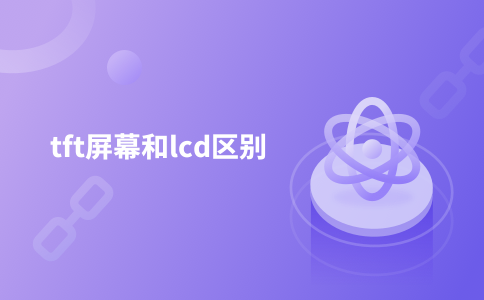TFT screens and LCD screens are two common display technologies that can be seen everywhere in daily life, but there are key differences between them. The editor of Downcodes will explain the working principles, image quality, viewing angles, application fields, advantages and disadvantages of TFT screens and LCD screens in a simple and easy-to-understand manner to help you better understand these two display technologies.
TFT screen (Thin Film Transistor Liquid Crystal Display) and LCD (Liquid Crystal Display) are common display technologies in our daily lives. They have some significant differences in structure and performance. This article will take an in-depth look at the differences between TFT screens and LCDs, including how they work, image quality, application areas, and pros and cons.
TFT screens and LCD are two display technologies widely used in electronic devices. They are similar in many ways, but there are also some important differences. Understanding these differences is critical to choosing the right display technology. This article will explore the differences between TFT screens and LCDs in detail to help readers better understand their characteristics and applicable fields.
TFT screens and LCD are both liquid crystal display technologies, but they differ in the way the liquid crystal molecules are arranged. LCD uses a traditional arrangement of liquid crystal molecules, while TFT screens use thin film transistors (Thin Film Transistor) to control the brightness of each pixel. This means that TFT screens are generally better in terms of response speed and color performance because each pixel has an independent transistor to control it.
Because of how TFT screens work, they generally perform better in terms of image quality. TFT screens are able to produce higher resolution, higher contrast and more vivid colors, which makes them perform better in demanding applications such as mobile phones, tablets and computer monitors.
LCDs have limitations in viewing angles, and you may experience color distortion or a decrease in brightness when you view the LCD screen from different angles. TFT screens generally have a wider viewing angle, and users can enjoy more consistent image quality from different angles.
TFT screens are widely used in high-end electronic devices such as smartphones, tablets, laptops and high-resolution TVs. Their superior image quality and responsiveness make them a top choice for these devices.
Although LCD still exists in some low-end electronic products, it is gradually being replaced by TFT screens due to its limited performance. LCDs are still used in some low-cost televisions, monitors, and calculators.
Advantages of TFT screens:
High resolution and image quality. Fast response speed, suitable for high refresh rate applications. A broader perspective. Suitable for high-end electronic equipment.Disadvantages of TFT screens:
The cost is higher. More sensitive to energy consumption.Advantages of LCD:
Relatively low cost. Consumes less power and is suitable for battery-powered devices.Disadvantages of LCD:
Lower image quality and responsiveness. Limited viewing angle range.
1. What is the difference between TFT screen and LCD?
Both TFT screens and LCDs are liquid crystal display technologies, but the main difference is that TFT screens use thin film transistors to control the brightness of each pixel, while LCDs use traditional arrangements of liquid crystal molecules. This makes TFT screens generally better in terms of response speed, image quality and viewing angles.
2. What devices is the TFT screen suitable for?
TFT screens are commonly used in high-end electronic devices such as smartphones, tablets, laptops and high-resolution TVs. Its superior image quality and responsiveness make it the display technology of choice for these devices.
3. Under what circumstances is LCD more suitable?
LCDs still exist in some low-cost devices, such as low-priced televisions, monitors, and calculators. Due to its relatively low cost and low energy consumption, LCD remains a suitable option in some situations.
4. What is the difference in viewing angle between TFT screen and LCD?
TFT screens generally have wider viewing angles, meaning users can enjoy more consistent image quality from different angles. LCDs have limitations in viewing angles, and color distortion or brightness reduction may occur when viewed from different angles.
5. How do I choose the display technology that’s right for me?
Choosing the display technology that's right for you depends on your needs and budget. If you're looking for high-quality images and fast response, TFT screens are a good choice. But if you're more sensitive to cost and energy consumption, an LCD may be more suitable. The final choice should be based on your specific application and priorities.
I hope the explanation by the editor of Downcodes can help you better understand the difference between TFT screen and LCD screen. Choose the display technology that suits your needs to get the best experience.